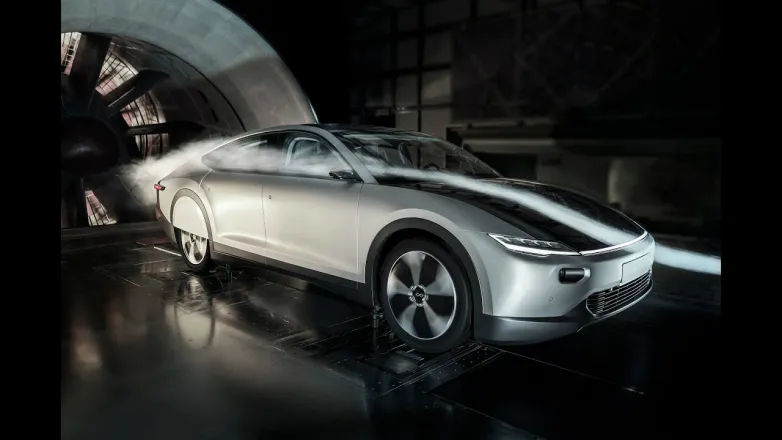Dutch startup Lightyear sets new benchmark in automobile aerodynamics with its solar-powered car
Nov 1, 2019 01:58 PM ET
- Many of the technologies we come across everyday seem to be either perfect or nearing perfection. However, there is always scope for improvement and this is what the Dutch startup Lightyear follows. The company manufactures a car that comes equipped with a solar panel that helps generate electricity and improve the vehicle’s range. While the solar panel itself is not a new innovation, the company has announced of notably improving the aerodynamics of its car.

Many of the technologies we come across everyday seem to be either perfect or nearing perfection. However, there is always scope for improvement and this is what the Dutch startup Lightyear follows. The company manufactures a car that comes equipped with a solar panel that helps generate electricity and improve the vehicle’s range. While the solar panel itself is not a new innovation, the company has announced of notably improving the aerodynamics of its car.
What a drag!
The term drag in the automobile sector is used to denote air resistance of a vehicle. Whenever a vehicle moves forward, it has to push air away and this creates some resistance or drag. This drag not only slows down the car but it also makes it’s engine work harder and use more fuel to propel it forward. In simple terms, a better-designed car has a lower drag coefficient and it is more efficient in saving fuel. Achieving a low aerodynamic coefficient drag is not easy, especially when you have a solar panel attached to your car.
The solar cells on the Lightyear One are 5 m2 in size, which was necessary for generating a considerable amount of electricity. Because of the solar cells, the car has an elongated shape, which enables air to flow over it better. Additionally, the designers implemented wheel covers and replaced the side mirrors with cameras, which further drove down the drag coefficient (Cd) to 0.20. With a Cd of 0.20, the Lightyear One is claimed to the most aerodynamic 5-seater vehicle.
Lightyear One
Lightyear unveiled its solar electric car Lightyear One back in June this year and almost immediately, it captured everyone’s attention. The vehicle is the first long-range solar car that claims to have a whopping range of 725 km on a single charge. This is possible due to the solar panel it comes with, which recharges the car’s batteries whenever sunlight hits it. This doesn’t mean that the car can’t be charged conventionally. It supports electric charging and can be charged at a (fast)charging station or even a regular outlet.
In pursuit of efficiency
To get a more efficient car, Lightyear used numerous methods in tandem. Most electric cars are stuck in a loop since more batteries do mean better range, but then the cars become heavier, which also consumes energy. With Lightyear One, this problem was taken care of from the start with the integration of solar panels. The panels enable the car to extend its range up to 60km per day. Using light composite materials and a smaller battery pack, the overall weight of the car was also reduced to further boost its efficiency. Using the 4 light in-wheel motors which replace the engine, Lightyear One was made as light and efficient as possible.
Lightyear was founded in 2016 by alumni of Solar Team Eindhoven, which won the Bridgestone World Solar Challenge. Since the launch, Lightyear has received awards, grants and support from key investors. Customers can reserve a Lightyear One for a fee of €119,000 on the company’s website.
Also read
